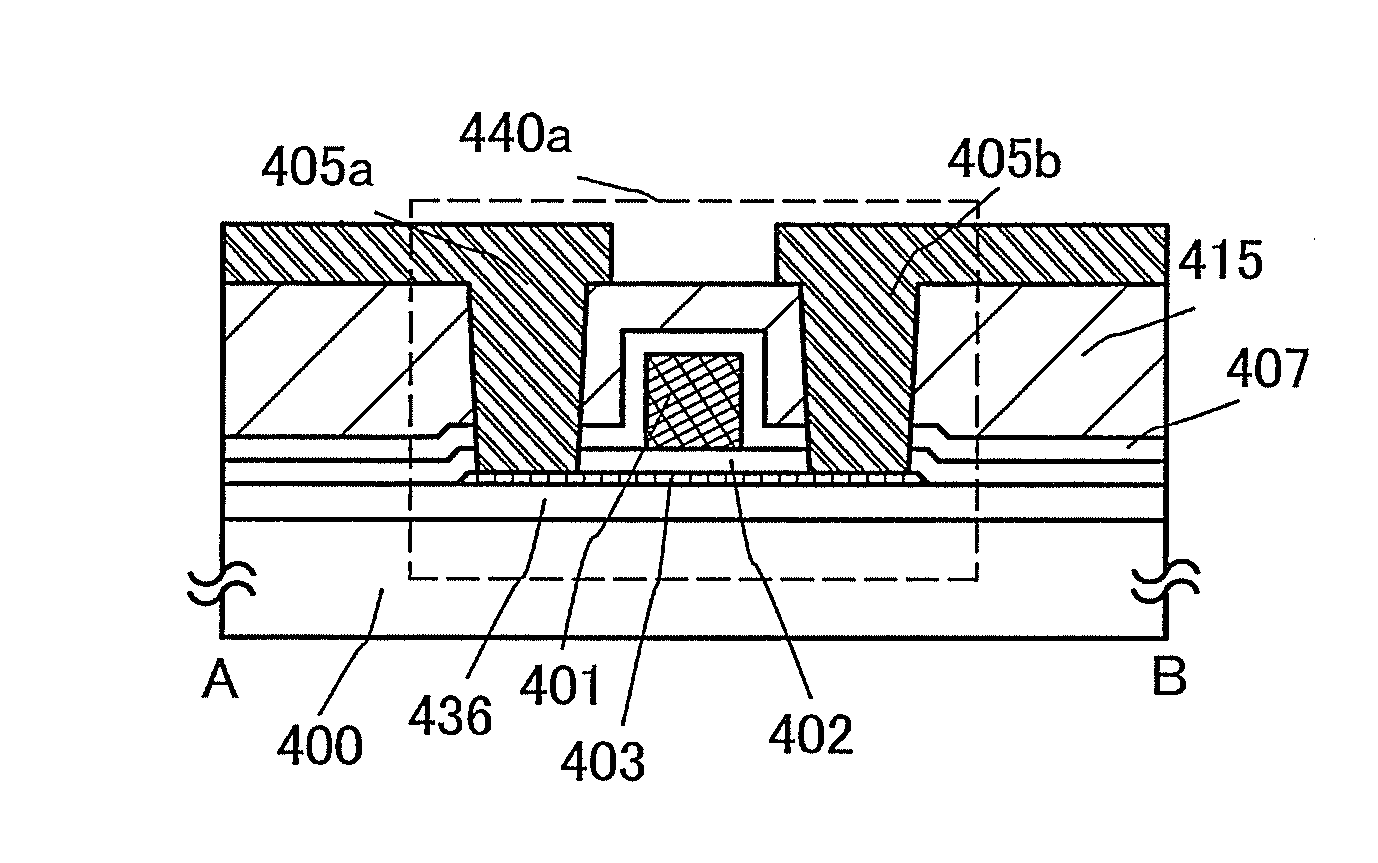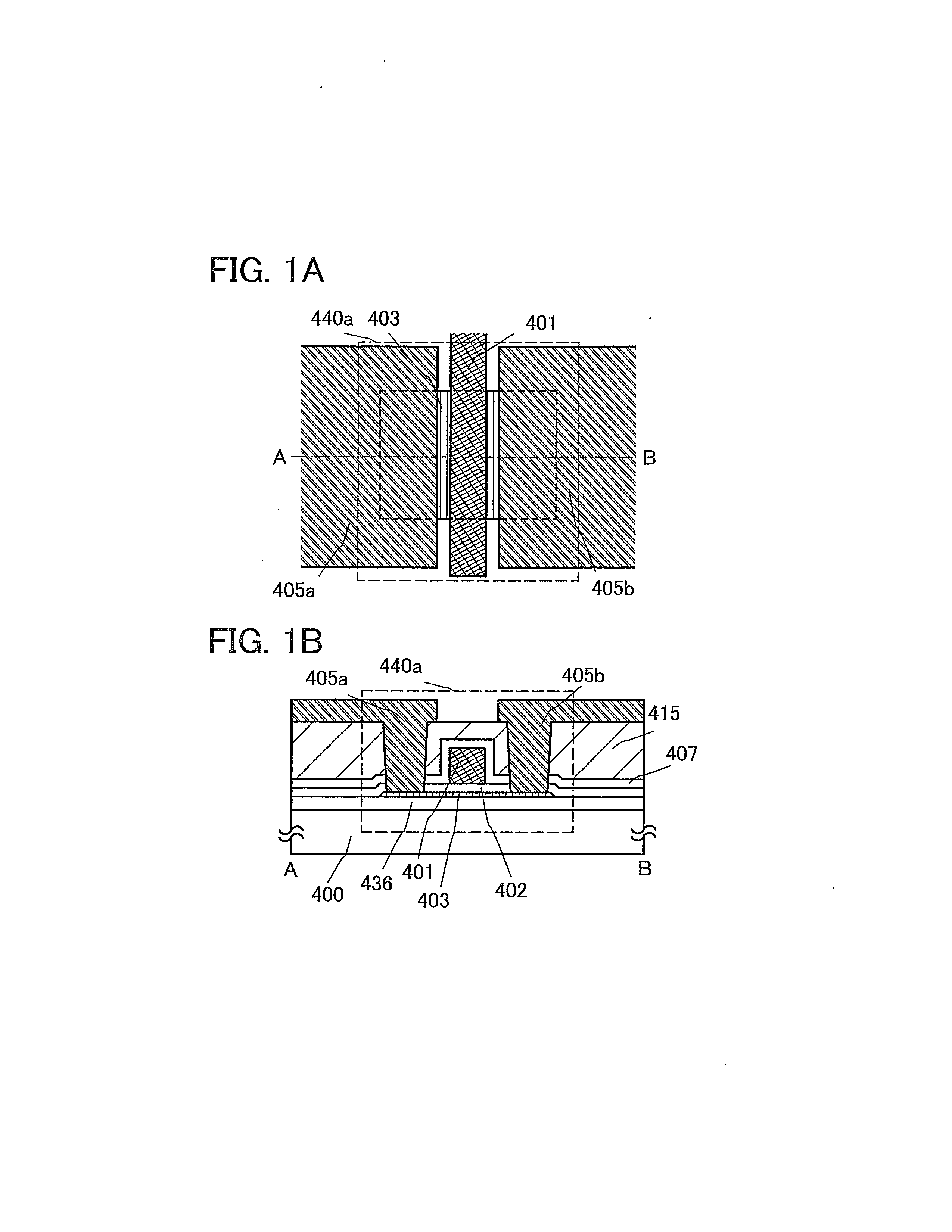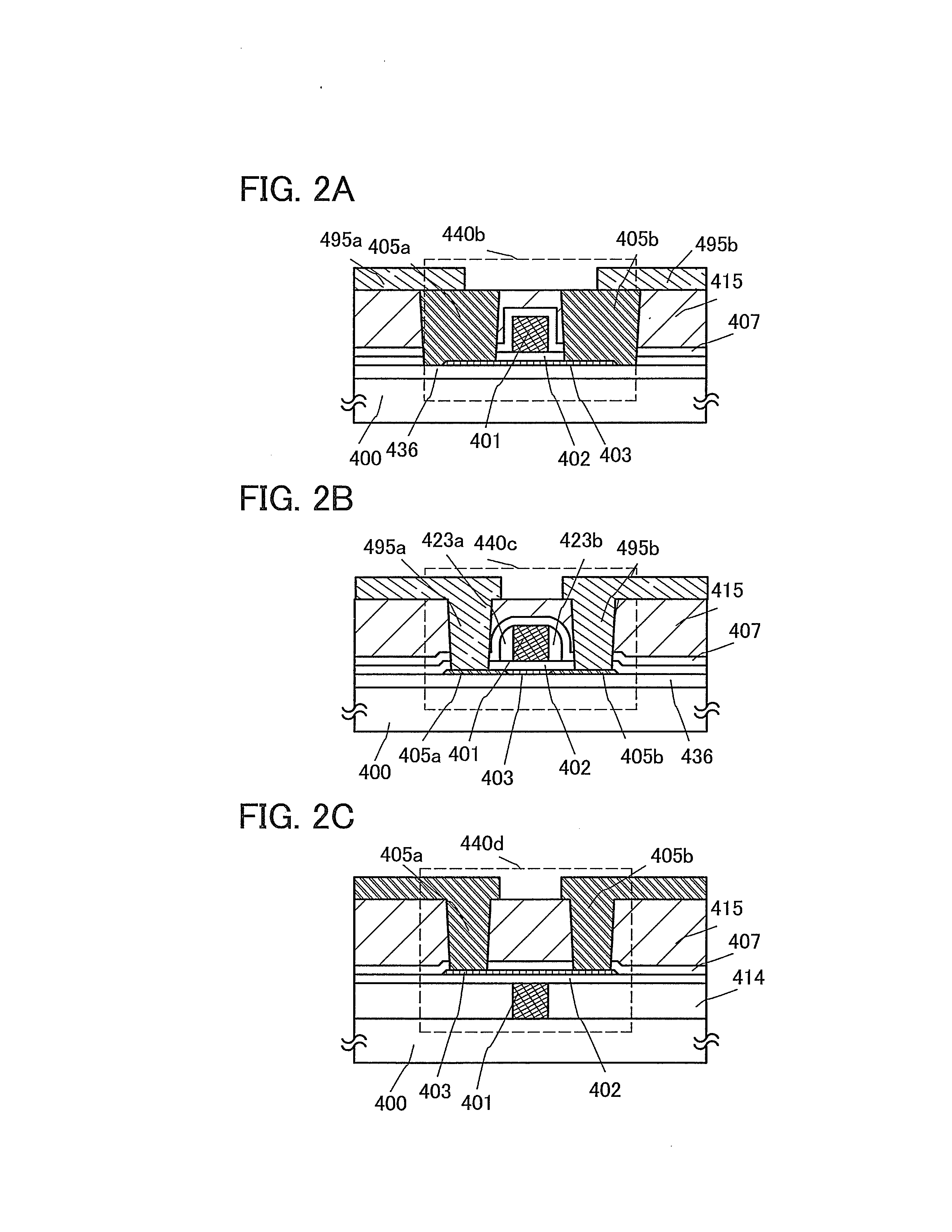Semiconductor device
a technology of semiconductors and semiconductors, applied in semiconductor devices, electrical equipment, transistors, etc., can solve the problems of short-channel effect, electric characteristics deterioration, transistor deterioration, etc., to achieve high-speed operation, shorten the channel length, and reduce the on-state resistance
- Summary
- Abstract
- Description
- Claims
- Application Information
AI Technical Summary
Benefits of technology
Problems solved by technology
Method used
Image
Examples
embodiment 1
[0098]In this embodiment, embodiments of a semiconductor device and one embodiment of a method for manufacturing the semiconductor device will be described using FIGS. 1A and 1B, FIGS. 2A to 2C, and FIGS. 3A to 3C. In this embodiment, a transistor including an oxide semiconductor film will be described as an example of the semiconductor device.
[0099]The transistor may have a top-gate structure or a bottom-gate structure, and may have a single-gate structure in which one channel formation region is formed, a double-gate structure in which two channel formation regions are formed, or a triple-gate structure in which three channel formation regions are formed. Alternatively, the transistor may have a dual-gate structure including two gate electrode layers positioned above and below a channel formation region with gate insulating films provided therebetween.
[0100]A transistor 440a illustrated in FIGS. 1A and 1B is an example of a top-gate transistor. FIG. 1A is a plan view of the transi...
embodiment 2
[0239]In this embodiment, an embodiment of a semiconductor device and a manufacturing method thereof will be described with reference to FIGS. 17A and 17B, FIGS. 18A to 18C, FIGS. 19A to 19C, and FIGS. 20A to 20C. In this embodiment, a transistor including an oxide semiconductor film will be described as an example of the semiconductor device.
[0240]The transistor may have a top-gate structure or a bottom-gate structure, and may have a single-gate structure in which one channel formation region is formed, a double-gate structure in which two channel formation regions are formed, or a triple-gate structure in which three channel formation regions are formed. Alternatively, the transistor may have a dual-gate structure including two gate electrode layers positioned above and below a channel formation region with gate insulating films provided therebetween.
[0241]FIGS. 17A and 17B illustrate a structure example of a transistor 420. The transistor 420 illustrated in FIGS. 17A and 17B is a...
embodiment 3
[0321]In this embodiment, an example of a semiconductor device which includes the transistor described in this specification, which can hold stored data even when not powered, and which does not have a limitation on the number of write cycles, will be described with reference to drawings.
[0322]FIGS. 5A to 5C illustrate an example of the structure of a semiconductor device. FIGS. 5A to 5C illustrate a cross-sectional view, a plan view, and a circuit diagram, respectively, of the semiconductor device. Here, FIG. 5A corresponds to cross sections taken along line C1-C2 and line D1-D2 in FIG. 5B.
[0323]The semiconductor device illustrated in FIGS. 5A and 5B includes a transistor 160 including a first semiconductor material in a lower portion, and a transistor 162 including a second semiconductor material in an upper portion. The transistor according to one embodiment of the present invention, which is described in Embodiment 1 or 2, can be applied to the transistor 162. This embodiment sh...
PUM
 Login to View More
Login to View More Abstract
Description
Claims
Application Information
 Login to View More
Login to View More - R&D
- Intellectual Property
- Life Sciences
- Materials
- Tech Scout
- Unparalleled Data Quality
- Higher Quality Content
- 60% Fewer Hallucinations
Browse by: Latest US Patents, China's latest patents, Technical Efficacy Thesaurus, Application Domain, Technology Topic, Popular Technical Reports.
© 2025 PatSnap. All rights reserved.Legal|Privacy policy|Modern Slavery Act Transparency Statement|Sitemap|About US| Contact US: help@patsnap.com



